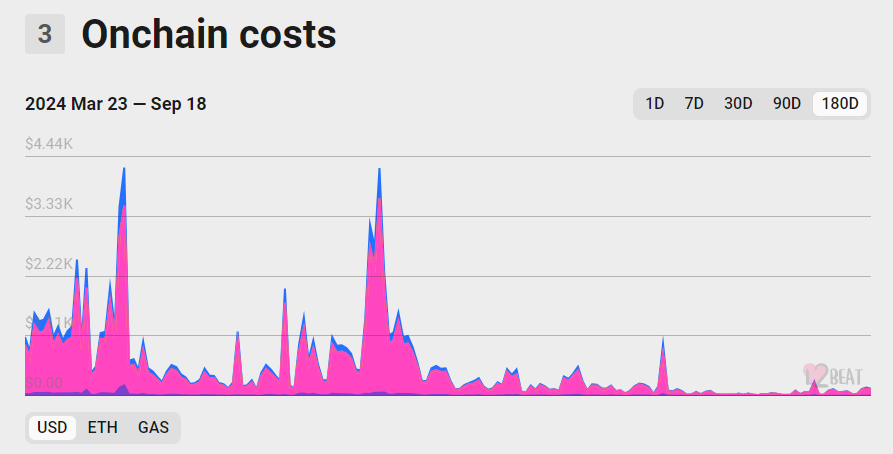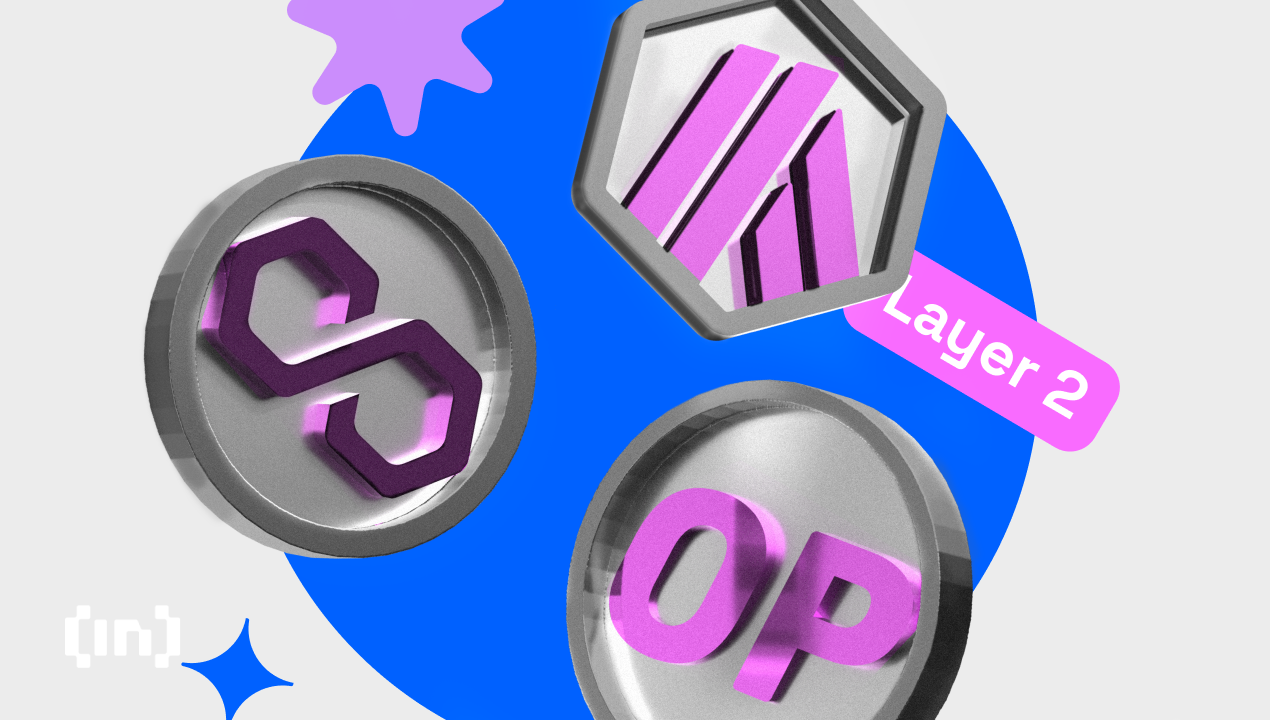Polygon offers a haven where DApps and smart contracts can flourish, free from Ethereum’s typical constraints. Meanwhile, Loopring — with its laser focus on decentralized exchanges — promises swift, wallet-friendly trades. Of course, both have their fair share of advantages and limitations. But which one truly stands out when we stack up Polygon vs. Loopring? Let’s find out.
KEY TAKEAWAYS► Polygon focuses on general-purpose applications like, while Loopring specializes in decentralized exchanges with ultra-low transaction fees.
► Both are zero-knowledge rollups, which have faster, more cost-effective transactions, but Polygon has a broader application beyond just trading.
► Polygon supports a wide range of DeFi and NFT projects. Loopring, focuses mainly on decentralized trading.
► Both Polygon and Loopring are examples of layer-2 solutions that enhance Ethereum without changing the original blockchain.
Polygon vs. Loopring: The details

Let’s zoom in on the Polygon vs. Loopring showdown.
Polygon

Polygon, a protocol designed to enhance Ethereum-compatible networks, offers an efficient way to build interconnected blockchain networks. By leveraging Ethereum’s security, Polygon significantly reduces transaction costs and has enhanced scalability.
Founded in 2017 by blockchain experts Jaynti Kanani, Sandeep Nailwal, and Anurag Arjun, the team initially launched the MATIC Network, which later evolved into Polygon POS in 2021. Eventually, Polygon would go on to create the Polygon zkEVM and Polygon Miden rollups.
The “zk” stands for “zero-knowledge proofs,” a privacy-centric proofing method that verifies transaction validity without revealing unnecessary transaction details.
Ethereum’s popularity as a platform for DApps is undeniable, but its growth has led to network congestion and soaring gas fees. That’s where Polygon’s layer-2 scaling solutions make a difference. They address the pressing needs of DApps: performance, user experience, and security while deploying zero-knowledge proofs for security.
In Polygon zkEVM’s case, it operates parallel to Ethereum, handling transactions independently, resulting in faster transaction times and minimal gas fees. Polygon users enjoy these reduced fees. Additionally, Polygon’s capabilities have spurred the growth of NFTs on its chain.
Loopring

Like Polygon, Loopring enhances Ethereum’s transaction speed and efficiency. It eases Ethereum’s main network traffic by creating a parallel processing system, similar to a side road branching off a congested highway.
Sponsored SponsoredThis approach allows the platform to achieve a throughput that’s about 1,000 times faster than Ethereum, peaking at 2,025 transactions per second. Moreover, while Ethereum transactions can be expensive, Loopring’s fees are typically less than a cent.
Loopring’s standout feature is its utilization of zk rollups. This ensures transaction privacy and reduces reliance on central entities.
Rollups, on the other hand, batch multiple transactions into one and process them on the base blockchain, like Ethereum. This batching mechanism reduces costs and boosts transaction speeds. A combination of zero-knowledge proofs and rollups, zk rollups offers a secure and efficient scaling solution that is ideal for trustless applications such as decentralized exchanges.
Loopring’s ecosystem is powered by its native crypto, LRC. Launched in 2017, LRC fuels Loopring’s decentralized exchange. Trading on this DEX incurs fees in LRC, with 80% going to liquidity providers and the rest divided between insurers and Loopring’s decentralized autonomous organization (DAO).
What is the difference between Loopring and Polygon?
Even though both Polygon and Loopring wear the “layer-2” badge, they’re kind of like apples and oranges in the blockchain world. Loopring is more about decentralized trading with a focus on automated market makers (AMM) on Ethereum. On the other hand, Polygon is your go-to for hosting DApps and rolling out smart contracts.
Now, when it comes to the nitty-gritty tech stuff, it’s like comparing apples to, well, oranges again. Sure, both promise you lightning-fast transactions without burning a hole in your pocket, but there are clear differences. Polygon is more of a versatile tool for low-cost payments, working with DApps, and playing with smart contracts. Loopring, however, is often the better choice for trading financial goodies with barely-there fees.
So, in the end, it all comes down to your objectives. If you’re looking for speedy ETH asset trades without the hefty price tags, Loopring might just be your match. But if you’re searching for a full-blown blockchain ecosystem full of NFT and DeFi components, then Polygon is the way to go.
SponsoredHere’s a quick comparison between the two:
| Feature/aspect | Polygon | Loopring |
| Basic description | A layer-2 blockchain built to help Ethereum scale, designed for speed, scalability, and security. | A layer-2 decentralized exchange tool built on Ethereum, focusing on low transaction fees and high throughput. |
| Main purpose | To deploy DApps, smart contracts, and offer a general-purpose payment network. | To offer users a DEX where they can trade and make transactions at a fraction of the Ethereum cost. |
| Throughput | Up to 40,000 transactions per second (tps). | Can handle over 2,000 trades per second, specifically for DEXs. |
| Special features | Uses a proof-of-stake consensus mechanism and has a vast ecosystem with a focus on DeFi and NFTs. | Uses zk rollup technology, allowing off-chain aggregation of transactions. |
| Ecosystem | Large and rapidly growing, with many decentralized exchanges supporting and operating on the Polygon network. | Focused on providing a platform for decentralized exchanges with reduced costs and increased speed. |
| Popularity | One of the largest and best-known Ethereum Layer 2 solutions in the market. | Recognized for its DEX-centric approach and zk rollup technology. |
What are layer-2 solutions?

Layer-2 solutions include advanced mechanisms designed to enhance the capabilities of primary blockchains. They address the inherent challenges primary blockchains face, such as scalability.
Blockchain technology has truly transformed industries, offering trustless interactions and unmatched security. Yet, many of them grapple with a scalability conundrum, which is another way of saying that they struggle with handling vast amounts of data efficiently.
For instance, Bitcoin’s main chain can only process three to seven transactions per second (TPS). This starkly contrasts with centralized systems like VisaNet, which can handle approximately 20,000 TPS. Ethereum is not immune to this either. It faces similar scaling hiccups, often resulting in higher transaction fees and slower confirmations.
So, what’s the bottleneck? Well, it is the decentralized nature of a blockchain, which is ironically also its biggest strength. Take Ethereum, for instance. Its global dance of nodes — accepting, mining, and validating transactions — is resource-intensive and time-consuming.
Sponsored SponsoredTo address these scalability concerns, developers are building ways to expand the blockchain’s capacity, aiming for faster processing times and more transactions per second.
Enter layer-2 solutions
Layer-2 scaling solutions are a practical answer to these challenges. Unlike layer-1 solutions that focus on altering the base protocols of blockchains, layer-2 crypto projects introduce an additional protocol built atop primary blockchains like Ethereum and Bitcoin.
Broadly speaking, they are effective because they amplify throughput without compromising the decentralization or security features intrinsic to the original blockchain.
Suppose you’re playing a video game, and it starts lagging because there are too many players online. The game developers can either rebuild the entire game (layer-1 solution) or add a new server to handle the extra players without changing the main game (that’s the equivalent of layer-2 solutions).
Now, when we talk about blockchains like Bitcoin and Ethereum, it’s a bit like that game scenario. Instead of overhauling their foundational design, we just add this “extra server” (the layer-2) on top.
This addition ensures everything operates more efficiently and quickly while preserving the original blockchain’s unique attributes. So, it’s more like a clever workaround to boost performance without changing the core properties.
Polygon vs. Loopring: Which is better?
Polygon and Loopring both bring distinct layer-2 solutions to enhance Ethereum’s efficiency. That said, although the two platforms have distinct characteristics, Polygon zkEVM has an edge, given its broader adoption and more extensive range of applications compared to Loopring. This isn’t to undermine Loopring’s capabilities, though. With its zk rollup technology, Loopring undoubtedly holds promise as continuous advancements and developments unfold.

